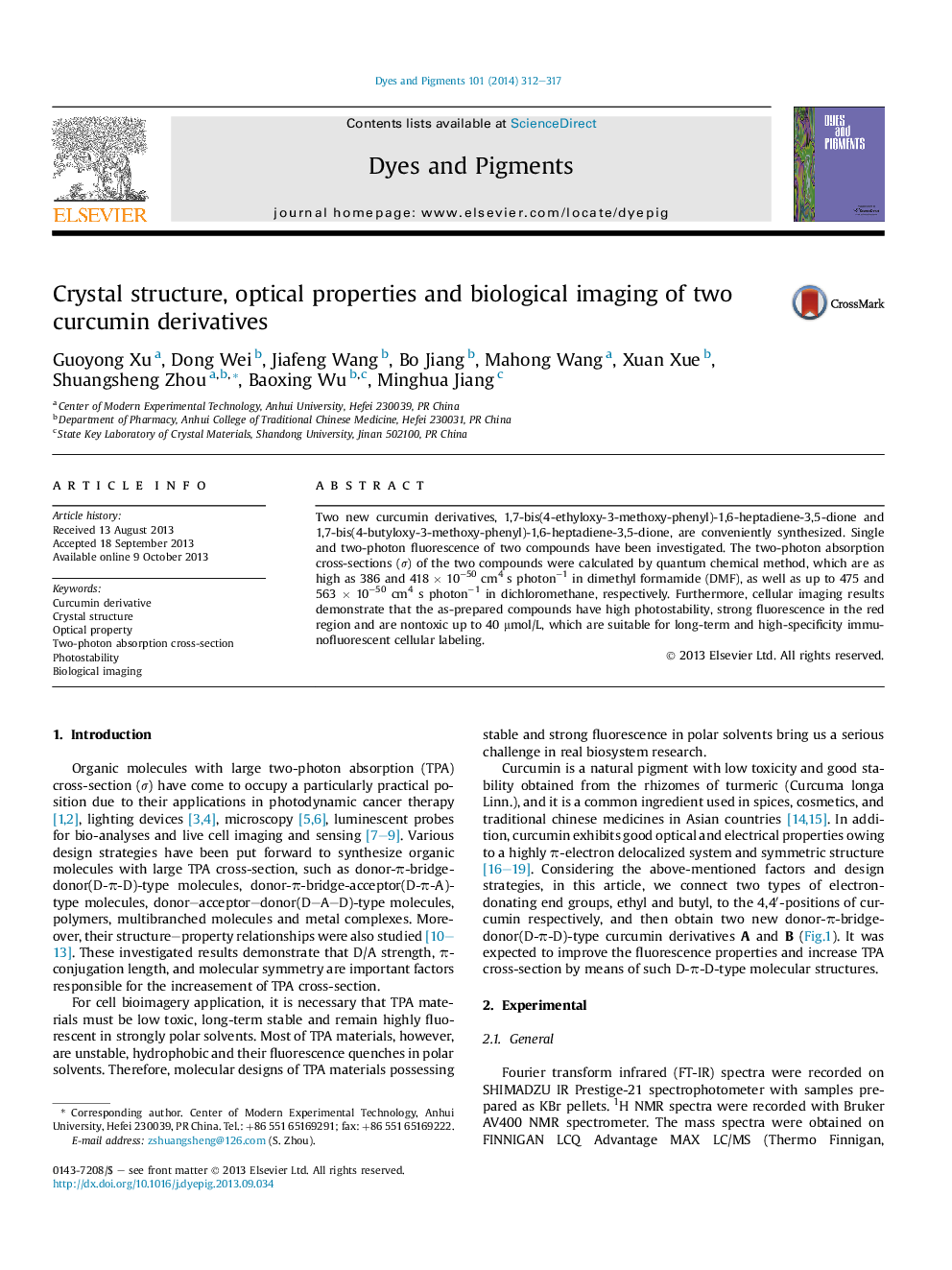| Article ID | Journal | Published Year | Pages | File Type |
|---|---|---|---|---|
| 176128 | Dyes and Pigments | 2014 | 6 Pages |
•Two novel curcumin derivative was synthesized.•The comounds exhibited obvious TPA in the range from 700–900 nm in high polar solvents.•Cytotoxicity tests showed that the low concentrations of the compounds did not cause reduction in cell viability at 24 h.•TPM imaging and photostability revealed the compounds are suitable for cell imaging.
Two new curcumin derivatives, 1,7-bis(4-ethyloxy-3-methoxy-phenyl)-1,6-heptadiene-3,5-dione and 1,7-bis(4-butyloxy-3-methoxy-phenyl)-1,6-heptadiene-3,5-dione, are conveniently synthesized. Single and two-photon fluorescence of two compounds have been investigated. The two-photon absorption cross-sections (σ) of the two compounds were calculated by quantum chemical method, which are as high as 386 and 418 × 10−50 cm4 s photon−1 in dimethyl formamide (DMF), as well as up to 475 and 563 × 10−50 cm4 s photon−1 in dichloromethane, respectively. Furthermore, cellular imaging results demonstrate that the as-prepared compounds have high photostability, strong fluorescence in the red region and are nontoxic up to 40 μmol/L, which are suitable for long-term and high-specificity immunofluorescent cellular labeling.
Graphical abstractTwo curcumin derivatives were synthesized. Cell imaging of MCF-7 cells labeled with the as-prepared compounds revealed the potential applications as a biological probe.Figure optionsDownload full-size imageDownload as PowerPoint slide
